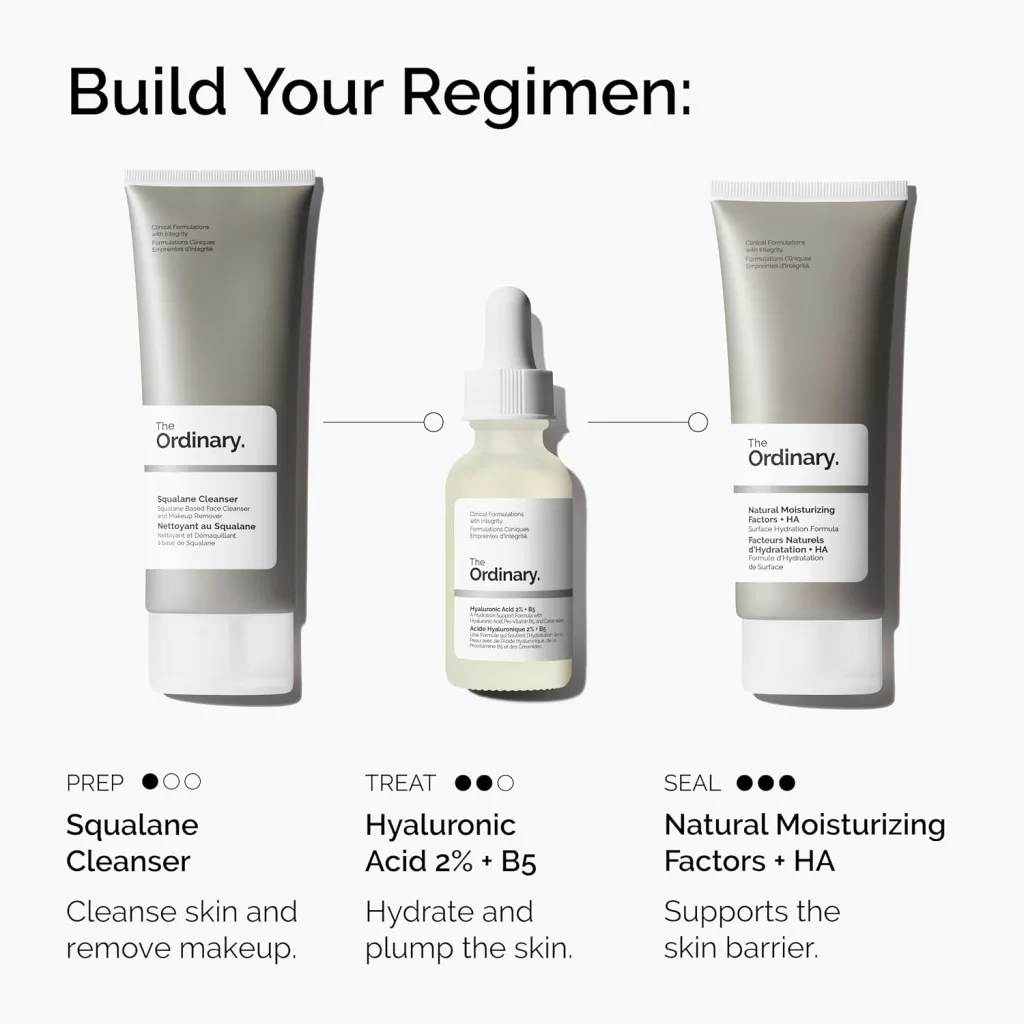Why Is My Face So Dry Even When I Moisturize? 7 Common Causes and Fixes
If you’ve ever wondered, “Why is my face so dry even when I moisturize?” you’re not alone. Dry skin can be frustrating, especially when your usual skincare routine doesn’t seem to help. The truth is, there are many reasons your skin might feel tight, flaky, or dehydrated—from using the wrong products to environmental factors or even underlying skin conditions. In this guide, we’ll explore 7 common causes of dry skin and share practical fixes to restore your skin’s hydration and glow. Let’s dive in!
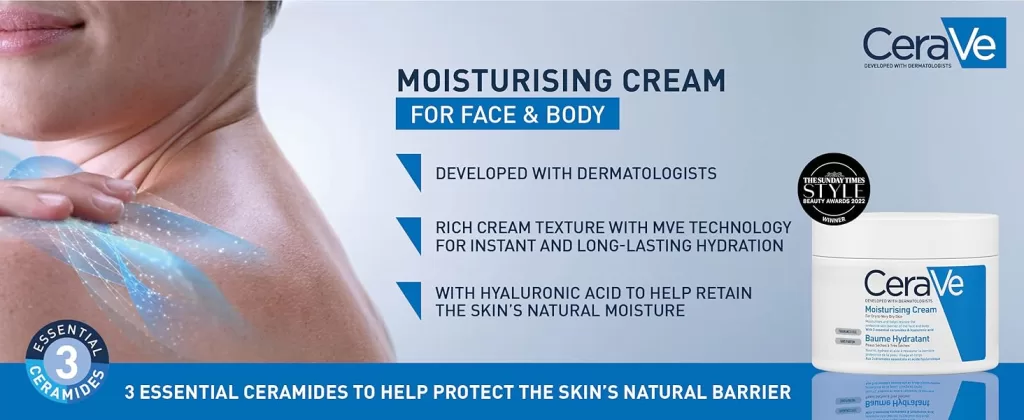
Why Is My Face So Dry? Common Causes Explained(and How to Fix Them)
You’re Using the Wrong Moisturizer for Your Skin Type
Why It Happens: Not all moisturizers work for every skin type. If you have dry skin and use a lightweight lotion, it might not provide enough hydration. On the other hand, using a heavy cream on oily skin can clog pores and lead to breakouts.
How to Fix It:
- For Dry Skin: Opt for rich, creamy moisturizers with ingredients like hyaluronic acid, ceramides, shea butter, or squalane. These ingredients lock in moisture and repair the skin barrier.
- For Oily/Combination Skin: Choose lightweight, water-based moisturizers labeled “non-comedogenic” to avoid clogging pores. Look for ingredients like glycerin or aloe vera for hydration without heaviness.
- Don’t: Assume all moisturizers are the same. Always check the label for ingredients suited to your skin type.
Your Skin Barrier Might Be Damaged
Why It Happens: Your skin barrier is like a protective shield. When it’s damaged (from over-exfoliation, harsh products, or environmental stressors), it can’t retain moisture, leaving your skin dry and sensitive.
How to Fix It:
- Use products with barrier-repairing ingredients like ceramides, niacinamide, fatty acids, and cholesterol. These help rebuild your skin’s natural defenses.
- Avoid over-exfoliating or using products with alcohol, fragrance, or sulfates, which can further damage the barrier.
- Don’t: Overdo it with actives like retinoids or acids until your barrier is healed.
You’re Not Applying Moisturizer Correctly
Why It Happens: If you apply moisturizer to dry skin, it won’t penetrate as effectively. Moisturizer works best when it’s layered onto damp skin to trap hydration.
How to Fix It:
- After cleansing, pat your face lightly with a towel but leave it slightly damp. Apply your moisturizer immediately to lock in the water.
- Layer a hydrating serum (like one with hyaluronic acid) under your moisturizer for an extra boost of hydration.
- Don’t: Rub your skin dry with a towel—this can cause irritation and strip away moisture.
Environmental Factors Are Zapping Your Moisture
Why It Happens: Cold weather, low humidity, and indoor heating can strip moisture from your skin, leaving it dry and tight. But there’s another culprit you might not be considering—ultraviolet (UV) rays. Overexposure to UV rays can accelerate skin aging, making your skin more prone to dryness as it loses its natural oils and elasticity. This can result in scaly, chapped, and cracked skin.
How to Fix It:
- Use a humidifier in your home to add moisture to the air, especially during winter.
- Switch to a thicker, more emollient moisturizer during colder months. Look for ingredients like petrolatum or lanolin for added protection.
- Avoid long, hot showers, as they can strip your skin of its natural oils.
- Don’t: Skip sunscreen in winter—UV rays can still damage your skin and worsen dryness.
By understanding these environmental triggers and taking proactive steps, you can protect your skin from drying out, keeping it healthy and hydrated all year round.
You’re Over-Exfoliating or Using Harsh Products
Why It Happens: Over-exfoliating or using harsh cleansers can strip your skin of its natural oils, leading to dryness and irritation.
How to Fix It:
- Limit exfoliation to 1-2 times a week and choose gentle exfoliants like lactic acid or PHA.
- Switch to a gentle, hydrating cleanser that doesn’t leave your skin feeling tight or dry.
- Avoid products with alcohol, fragrance, or sulfates, which can be drying.
- Don’t: Use physical scrubs or harsh exfoliants if your skin is already dry or sensitive.
Dehydration Could Be the Culprit
Why It Happens: Dry skin isn’t just about what you put on your face—it’s also about what you put in your body. Dehydration can make your skin feel tight, flaky, and dull.
How to Fix It:
- Drink at least 8 glasses of water a day to stay hydrated.
- Eat water-rich foods like cucumbers, watermelon, oranges, and celery.
- Incorporate healthy fats like avocados, nuts, and olive oil into your diet to support skin hydration.
- Don’t: Rely solely on topical products—hydration starts from within.
How Does Smoking Influence Skin Dryness?
Smoking is notorious for its detrimental effects on health, and your skin is far from immune. The chemicals present in cigarettes, including nicotine, have a direct impact on your skin’s appearance and health. Let’s explore how smoking leads to skin dryness.
Impact on Blood Circulation
Nicotine causes blood vessels to constrict, reducing blood flow throughout the body. This restriction in circulation means less oxygen and nutrients reach the skin, crucial elements that keep it soft and hydrated.
Reduced Metabolic Activity
With diminished blood flow comes a lowered metabolic rate. This sluggish metabolism impairs the skin’s ability to regenerate and repair itself, accelerating the aging process and leading to drier, less resilient skin.
Nutrient Depletion
The toxins in cigarette smoke deplete vital nutrients like vitamin C, which is essential for collagen production and moisture retention. A lack of collagen can make the skin lose elasticity and moisture, contributing further to dryness.
In summary, smoking introduces harmful toxins that impede blood flow, slow metabolism, and drain nutrients, all of which culminate in drier, prematurely aging skin. Kicking the habit can significantly improve your skin’s hydration and overall health.
Underlying Skin Conditions Might Be at Play
Why It Happens: Conditions like eczema, psoriasis, or rosacea can cause persistent dryness, redness, and irritation. These conditions disrupt your skin’s ability to retain moisture and are often linked to dryness in the skin.
Symptoms to Look For:
- Atopic Dermatitis and Psoriasis: These conditions often lead to skin that looks reddened and flaky. Affected areas can feel intensely itchy, highlighting the severe impact on skin moisture.
- Discoid Eczema: This results in circular dry patches, typically on the torso and lower body, providing another example of how skin conditions can vary in presentation.
- Sensitive Skin: Often due to dehydration, sensitive skin can naturally occur, increasing the risk of dryness.
How to Fix It:
- If you suspect an underlying condition, consult a dermatologist for a proper diagnosis and treatment plan.
- Use fragrance-free, hypoallergenic products designed for sensitive skin.
- Look for ingredients like colloidal oatmeal, centella asiatica, or allantoin to soothe irritation.
- Don’t: Self-diagnose or use over-the-counter steroid creams without medical advice.
Other Factors:
- Metabolic Conditions: Conditions such as diabetes mellitus and kidney disease can increase the risk of dry skin, emphasizing the importance of managing overall health for better skin moisture retention.
By understanding these skin conditions and their symptoms, you can better address the root causes and find effective solutions to enhance your skin’s health and comfort.
What Are the Symptoms of Severe Dry Skin?
Severe dry skin can manifest in a variety of uncomfortable ways. Common symptoms include:
- Tightness: The skin may feel uncomfortably stretched.
- Scaliness or a Leathery Texture: A noticeable roughness that might resemble scales or a leathery feel.
- Itchiness: One of the most prevalent symptoms, leading to frequent scratching.
- Roughness and Cracking: The skin may become so dry that it starts to crack, causing soreness.
These symptoms can vary in intensity depending on the skin’s condition and the specific area of the body affected. It’s important to remember that while these signs often indicate dryness, they might sometimes overlap with symptoms of other skin conditions, so consulting a dermatologist for a thorough evaluation is advisable.
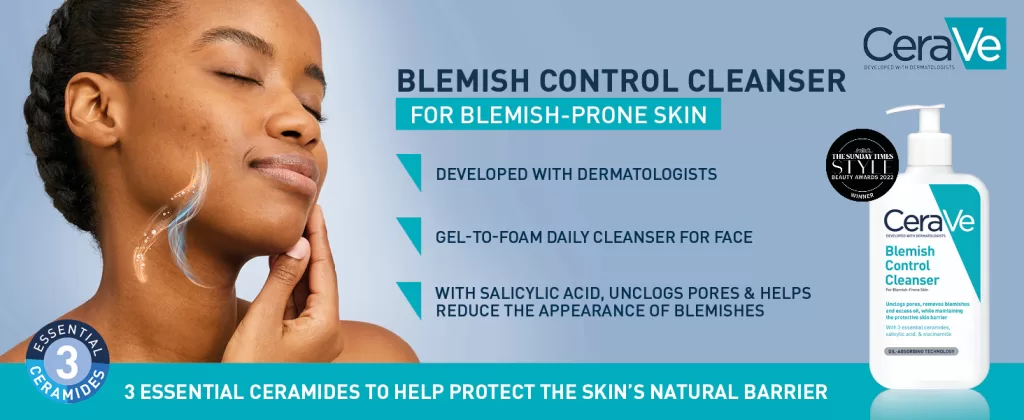
Signs and Symptoms of Very Dry Skin
Commonly Affected Areas
Dry skin can appear on almost any part of the body but tends to be most prevalent on the hands, face, elbows, legs, feet, scalp, and arms. Areas frequently exposed to the environment, such as during the cold winter months, are more susceptible. Skin conditions like eczema and psoriasis can also lead to dryness.
General Symptoms
Severe dryness can manifest as skin that feels very tight, with a texture that might be rough, scaly, or leathery. You may also experience significant itchiness. In cases of extremely dry skin, the affected regions can feel cracked and painful. While these symptoms may indicate dryness, they can vary in intensity depending on the underlying cause and the body part that is affected.
Mild Dry Skin
Initially, the skin may simply feel slightly tight or rough. As moisture continues to escape, these areas could develop a flaky or scaly texture and start to itch. This progression is often uncomfortable and may lead to further irritation if not addressed promptly.
Severe Dry Skin
Both internal factors, like hormonal changes, and external factors, such as dry air or harsh soaps, can exacerbate severe dryness. Neglected or improperly treated dry skin can escalate into severely parched patches. These areas might become extremely tight, rough, or even begin to crack and bleed. If itchiness turns to irritation and discomfort persists, consulting a dermatologist is advisable.
Scaly Skin
Severe dryness can lead to large flakes forming as the outer layer of the epidermis sheds. This condition presents with dry, peeling patches that turn red and itchy. Such symptoms are especially noticeable on visible areas such as the face and hands, potentially affecting personal confidence. Medical advice should be sought for persistent or severe scaling.
Particular Areas of Concern
- Hands: Frequent handwashing, or the use of drying hand sanitizers, often leads to dry, cracked skin on the knuckles, fingers, and palms.
- Feet: Dry patches, particularly around the heels, are common due to weight-bearing and friction from movement. This can result in painful cracked heels.
Monitoring for these signs and symptoms can aid in identifying dry skin early, allowing for more effective treatment and management.
Understanding the Connection Between Frequent Hand Washing and Dry Skin
Frequent hand washing can significantly contribute to dry skin by stripping the natural oils that protect the epidermis. These oils, essential for retaining moisture and maintaining skin elasticity, are often removed by harsh soaps or hand sanitizers used during regular washing.
Sensitive Areas at Risk
- Knuckles and Fingers: These areas are particularly vulnerable, as the skin is often thinner and more prone to cracking.
- Palms: Constant exposure can lead to flakiness, a common signal of lost moisture.
While good hygiene is necessary, excessive washing or using alcohol-based sanitizers accelerates dryness.
Preventive Measures
- Moisturize Regularly: Use a hand cream or lotion immediately after washing while the skin is still damp.
- Opt for Gentle Cleansers: Choose soaps with added moisturizers or mild ingredients to lessen the impact on your skin.
- Protective Wear: Consider wearing gloves while doing tasks that can further dry out your skin, like dishwashing.
Maintaining skin health requires balance. By taking these simple steps, you can keep your hands clean without compromising their natural moisture.
As we age, our skin undergoes several changes that impact its ability to retain moisture. One significant change is the reduction in the number of sebaceous and sweat glands. These glands are responsible for producing oils and sweat, which help maintain the skin’s natural barrier. With fewer of these glands, the skin gradually loses its capacity to produce the essential lipids that keep it hydrated.
Another key factor is the decrease in the skin’s water content and its ability to bind moisture. This diminished moisture retention is partly due to a natural decline in hyaluronic acid levels, a substance known for its exceptional ability to hold water within the skin layers.
These collective changes lead to an increase in skin dryness, contributing to the formation of fine lines and wrinkles. As the skin loses its elasticity, these signs of aging become more pronounced, highlighting the importance of moisturizing regularly to support skin health.

Understanding Xerosis: A Deep Dive into Dry Skin
Xerosis is the clinical term for what we commonly know as dry skin. This condition is incredibly prevalent, affecting almost everyone at some point during their lives. But what exactly distinguishes xerosis from just having temporarily dry skin?
The Nature of Xerosis
Xerosis isn’t just an occasional feeling of tightness or flakiness; it represents a chronic issue where the skin lacks adequate moisture. Though anyone can experience xerosis, it can be particularly stubborn and long-lasting for some individuals, requiring specific skincare adjustments.
How Xerosis Relates to Dry Skin
While the occasional dry patch can be resolved with a dab of lotion, xerosis often demands more tailored treatments. The condition can manifest more severely, with symptoms such as rough, scaly, or cracked skin. Various factors, including environmental conditions, aging, and inadequate skincare, can exacerbate xerosis. To combat this, adopting a skincare routine that emphasizes hydration and barrier protection is crucial.
Key Strategies for Managing Xerosis
- Hydration: Investing in high-quality moisturizers that contain ingredients like hyaluronic acid or glycerin can significantly help.
- Gentle Cleansing: Use fragrance-free, soap-free cleansers to avoid further skin irritation.
- Smart Bathing Practices: Limit bathing time and opt for lukewarm water instead of hot, which can strip the skin of essential oils.
By understanding xerosis as more than a simple inconvenience, you can better manage and treat this form of dry skin effectively.
How Hormonal Changes Affect Skin Dryness
Hormonal changes can greatly impact skin moisture levels, leading to dryness. Here’s how:
1. Estrogen and Skin Moisture
Estrogen plays a crucial role in maintaining the skin’s natural hydration and elasticity. As levels of this hormone drop, particularly during menopause, the skin often suffers from increased dryness. This decrease in estrogen production results in a diminished capacity to retain moisture, making the skin more prone to dryness and discomfort.
2. Testosterone’s Role
While testosterone is mainly associated with oil production in the skin, it also contributes to overall skin health. Changes in testosterone levels can alter lipid production, impacting the skin’s ability to stay hydrated. Decreased levels can lead to less natural oil, contributing to a dry texture.
3. Pregnancy and Hormonal Shifts
During pregnancy, the body undergoes significant hormonal shifts, which can affect skin hydration. The skin’s moisture balance may be disrupted both by hormonal fluctuations and the body’s increased demand for fluids. As a result, many women experience dry skin during this time.
In summary, hormonal changes, whether due to age or life stages such as pregnancy, can influence the skin’s natural ability to stay hydrated, leading to dryness. Understanding these effects can help in managing and improving skin condition through tailored skincare routines.

How Do Medications Contribute to Dry Skin?
Medications can lead to dry skin in various ways, often as an unintended side effect. Here’s a closer look at how this happens:
- Water Excretion Increase: Some medications, such as diuretics used for managing high blood pressure, work by promoting the elimination of excess water from your body. While effective for their primary purpose, they also reduce the body’s natural moisture, potentially leading to dry skin.
- Impact of Antibiotics: Certain antibiotics can cause a disruption in the natural balance of microorganisms on your skin. This imbalance may compromise your skin’s ability to retain moisture, resulting in dryness over time.
- Acne Treatment Effects: Oral medications for acne, like isotretinoin, often decrease the production of oil by the skin’s sebaceous glands. While this helps in controlling acne, it can also lead to a reduction in the skin’s natural lubrication, making the skin feel parched and flaky.
It’s important to regularly consult with your doctor or pharmacist if you suspect any medication might be drying out your skin. They can offer alternative treatments or suggest ways to manage this side effect.
How Genetic Influences Impact Skin Moisture Balance
Genetics play a significant role in determining your skin’s natural moisture levels. Here’s how your genes can affect your skin:
- Inherited Skin Types: Whether you have oily, dry, or combination skin can largely depend on your genetic makeup. While you might not inherit the exact skin type of your parents, their genes do contribute to shaping yours.
- Susceptibility to Skin Conditions: Certain skin conditions that affect moisture balance, such as eczema, psoriasis, and ichthyosis, often have genetic components. If these conditions run in your family, you might be more likely to experience them yourself.
- Gene-Related Variability: The genetic factor doesn’t just dictate skin type; it also affects how your skin responds to environmental factors and how it ages, both of which can influence moisture retention.
In summary, your DNA sets the baseline for your skin’s ability to retain moisture, influencing both its natural hydration levels and its susceptibility to specific conditions. Understanding this connection can help you make informed choices about skincare routines and treatments.
Best Clothing Materials for Dry Skin
If you suffer from dry skin, choosing the right clothing materials can make a significant difference in your comfort. Here are some key options to consider:
- Cotton: A favorite among those with sensitive skin, cotton is soft, breathable, and allows your skin to stay cool and hydrated. Its hypoallergenic properties minimize the risk of irritation.
- Silk: Known for its smooth texture, silk feels gentle against the skin and helps maintain moisture, making it an excellent choice for those prone to dryness.
While other natural fibers like wool are warmth-keeping and regulate temperature, they might not always be skin-friendly. Those with sensitive or dry skin should be cautious, as wool can often aggravate skin irritation.
By choosing clothing made of cotton or silk, you not only enhance your comfort but also take steps to prevent further skin dryness and discomfort.

Understanding How Friction and Pressure Affect Foot Skin Dryness
Have you noticed dry patches on your feet, especially around the heels? This common issue is often tied to how our feet bear weight and undergo constant friction.
The Impact of Friction
Feet are in motion often, which means that certain areas frequently rub against surfaces. This includes the soles and ankles. Such repeated friction can damage the outer skin layer, leading to dryness and peeling.
The Role of Pressure
Weight-bearing parts of the feet, like the balls and heels, endure significant pressure. This pressure can compress and strain the skin, causing it to lose moisture quickly and making the skin more prone to cracking and scaling.
Consequences of Dry Skin on Feet
- Peeling Skin: The initial sign of dry skin due to pressure and friction.
- Cracked Heels: When the dryness becomes severe, painful cracks may form.
- Scaly Texture: The skin might develop a rough, scaly feel over time.
Preventing these uncomfortable symptoms involves reducing friction and evenly distributing pressure. Consider supportive footwear and moisturizing creams from third-party brands like Neutrogena or CeraVe to maintain skin hydration.
Final Thoughts
Dry skin can be frustrating, especially when moisturizing doesn’t seem to help. By addressing the root causes—whether it’s the wrong products, environmental factors, or an underlying condition—you can restore your skin’s hydration and glow. Remember, consistency is key, and sometimes a little professional guidance goes a long way!
To effectively prevent dry skin, consider these detailed strategies:
- Avoid Harsh Soaps: Opt for gentle cleansers that don’t strip away natural oils. Strong soaps can remove essential lipids, leaving your skin parched.
- Mind the Air Around You: Use a humidifier during winter months when indoor heating is on, and limit outdoor exposure in extreme weather. This helps maintain the moisture level in both your environment and skin.
- Water Temperature Matters: Reduce time spent in hot showers and baths. Stick to warm water to preserve your skin’s natural oils, and be cautious about over-washing your face.
- Protective Gear: Wear gloves while washing dishes or cleaning to shield your skin from hot water and harsh detergents. Gardening gloves can also prevent moisture loss from soil exposure.
- Choose the Right Fabrics: Wear clothing made from natural materials like cotton or silk. While wool is natural, it might irritate sensitive skin and is best avoided if you experience dryness.
- Select Gentle Products: Use laundry detergents and skincare products free from dyes, perfumes, and colorants. These can linger on clothes and skin, potentially causing irritation.
- Stay Hydrated: Drink plenty of water to support your skin’s moisture balance. This is crucial for everyone, particularly the elderly, who are more susceptible to dehydration.
By integrating these practices into your routine, you can effectively combat dry skin and enjoy a healthier, more radiant complexion.
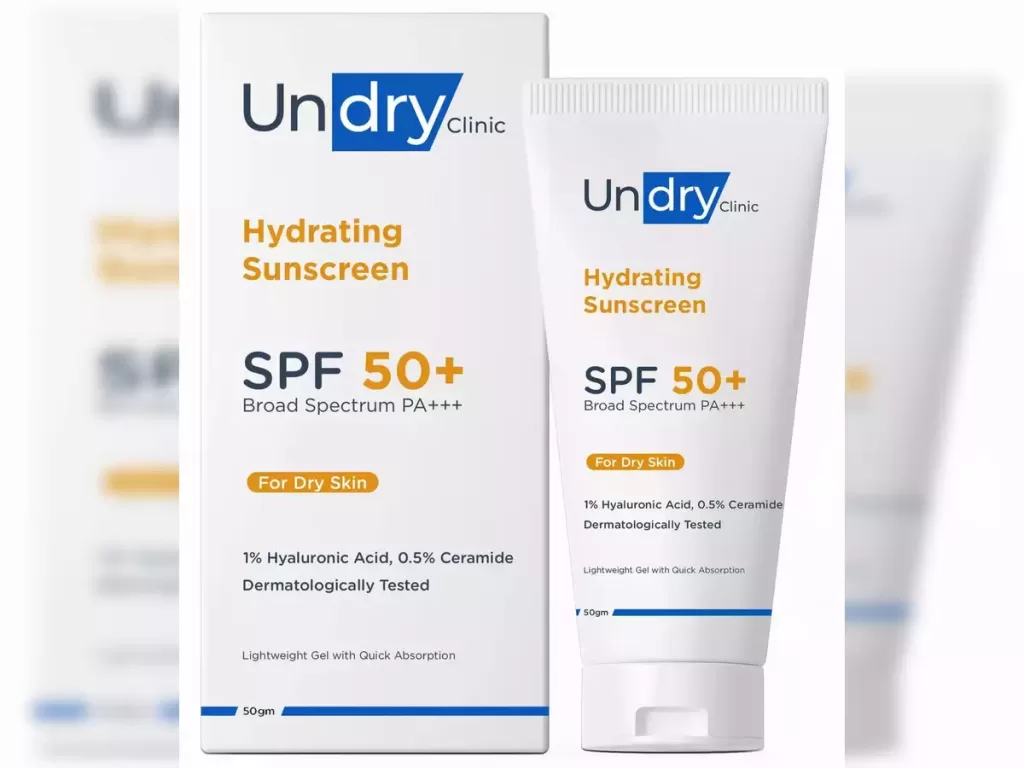
How to Fix why is my face so dry: A Step-by-Step Routine
1. Cleanse Gently: Use a Hydrating Cleanser
Product Recommendation: CeraVe Hydrating Cleanser
- Why It’s Great: This cleanser is formulated with ceramides and hyaluronic acid to cleanse without stripping the skin’s natural moisture barrier. It’s fragrance-free, non-comedogenic, and suitable for all skin types, including sensitive skin.
- How to Use: Massage a small amount onto damp skin, then rinse with lukewarm water. Pat your face dry with a soft towel.
- Key Benefits:
- Restores the skin barrier with essential ceramides.
- Hydrates and soothes with hyaluronic acid.
- Gentle enough for daily use, even on dry or sensitive skin.
By maintaining the skin’s natural defenses, you can effectively manage dryness without compromising on cleanliness. This approach ensures that your skin stays hydrated and protected, making it suitable for everyday use.
2. Layer Hydration: Apply a Hyaluronic Acid Serum
Product Recommendation: The Ordinary Hyaluronic Acid 2% + B5
- Why It’s Great: This lightweight serum combines hyaluronic acid (which holds up to 1,000 times its weight in water) with vitamin B5 to deeply hydrate and plump the skin. It’s affordable, effective, and works for all skin types.
- How to Use: Apply 2-3 drops to damp skin after cleansing. Gently press it into your face and neck, then follow with moisturizer.
- Key Benefits:
- Intensely hydrates and reduces the appearance of fine lines.
- Improves skin texture and elasticity.
- Lightweight and non-greasy, making it perfect for layering.
3. Seal It In: Follow with a Rich Moisturizer
Product Recommendation: La Roche-Posay Cicaplast Baume B5
- Why It’s Great: This rich, soothing balm is packed with panthenol, shea butter, and madecassoside to repair and hydrate dry, irritated skin. It’s especially great for those with sensitive or compromised skin barriers.
- How to Use: Apply a pea-sized amount to your face and neck after your serum. Use morning and night for best results.
- Key Benefits:
- Repairs the skin barrier and locks in moisture.
- Soothes irritation and redness.
- Non-comedogenic and suitable for all skin types.
4. Protect: Use Sunscreen Daily
Product Recommendation: EltaMD UV Clear Broad-Spectrum SPF 46
- Why It’s Great: This lightweight, oil-free sunscreen is formulated with niacinamide and hyaluronic acid to protect and hydrate the skin. It’s ideal for sensitive or acne-prone skin and doesn’t leave a white cast.
- How to Use: Apply as the last step in your morning routine. Use a nickel-sized amount for your face and neck. Reapply every 2 hours if you’re outdoors.
- Key Benefits:
- Protects against UVA/UVB rays.
- Calms and hydrates with niacinamide and hyaluronic acid.
- Lightweight and non-greasy, perfect for daily wear.
For dry skin, it’s crucial to choose sunscreens that are free from irritating perfumes and colorants, as these can exacerbate dryness and irritation. Opt for products that offer broad-spectrum protection and include antioxidants to combat UV-induced free radicals. Such ingredients not only shield your skin but also help prevent premature aging.
Incorporate these strategies to ensure your skin remains healthy and protected every day. By combining the right products with mindful sun exposure habits, you can maintain your skin’s vitality and resilience.

5. Exfoliate Wisely: Use a Gentle Exfoliant
Product Recommendation: Paula’s Choice Skin Perfecting 2% BHA Liquid Exfoliant
- Why It’s Great: This cult-favorite exfoliant uses salicylic acid (BHA) to gently unclog pores, smooth texture, and remove dead skin cells without irritation. It’s suitable for all skin types, including sensitive skin.
- How to Use: Apply a few drops to a cotton pad and swipe over clean, dry skin 1-2 times a week. Follow with your hydrating serum and moisturizer.
- Key Benefits:
- Reduces clogged pores and blackheads.
- Smooths skin texture and improves radiance.
- Anti-inflammatory properties help calm redness.
6. Essential Lifestyle Changes
- Avoid Harsh Soaps: Opt for gentle, hydrating cleansers to preserve natural skin lipids.
- Maintain Indoor Humidity: Use a humidifier, especially in winter, to combat dry indoor air from heating and air conditioning.
- Limit Hot Water Exposure: Take quick showers with warm water instead of long, hot baths to prevent moisture loss.
- Wear Protective Gear: Use gloves while washing dishes or gardening to avoid skin contact with harsh detergents and irritants.
- Choose Natural Fabrics: Wear clothing made of cotton and silk to minimize irritation, avoiding wool if it causes discomfort.
- Select Gentle Detergents: Use fragrance-free and dye-free detergents to prevent skin irritation.
- Stay Hydrated: Drink plenty of water daily to maintain skin hydration from the inside out.
Bonus Tip: Don’t Overdo It!
- Exfoliation Frequency: Stick to exfoliating 1-2 times a week to avoid over-stripping your skin. Over-exfoliation can lead to dryness, irritation, and a compromised skin barrier.
- Patch Test: Always patch-test new products to ensure they don’t cause irritation or breakouts.
Why This Routine Works
This routine focuses on gentle cleansing, deep hydration, barrier repair, sun protection, and gentle exfoliation—all essential steps for maintaining healthy, glowing skin. By using these carefully selected products, you’ll address dryness, improve texture, and protect your skin from further damage.
When to See a Dermatologist
If your dry skin persists despite your best efforts—using the right products, adjusting your routine, and making lifestyle changes—it’s time to consult a dermatologist. Dermatologists are medical doctors who specialize in diagnosing and treating conditions related to the skin, hair, and nails. They play a crucial role in identifying underlying causes of persistent dryness and providing tailored solutions.
Why Dermatologists Are Important
- Expertise in Skin Health:
Dermatologists undergo extensive training to understand the complexities of the skin. They can diagnose conditions that may not be obvious to the untrained eye, such as eczema, psoriasis, rosacea, or even fungal infections. - Personalized Treatment Plans:
Everyone’s skin is unique, and what works for one person may not work for another. Dermatologists can create a customized treatment plan based on your specific skin type, concerns, and medical history. - Access to Prescription Treatments:
Over-the-counter products can only do so much. Dermatologists can prescribe stronger medications, such as topical steroids, retinoids, or immunosuppressants, to address severe or chronic skin issues. - Advanced Procedures:
For stubborn dryness or skin conditions, dermatologists can perform in-office treatments like chemical peels, laser therapy, or microneedling to rejuvenate and hydrate the skin. - Prevention and Early Detection:
Dermatologists don’t just treat existing problems—they also help prevent future issues. Regular check-ups can catch early signs of skin cancer or other serious conditions, ensuring timely intervention.
Signs It’s Time to See a Dermatologist
- Persistent Dryness: If your skin remains dry, flaky, or irritated despite using moisturizers and hydrating products.
- Severe Itching or Redness: These could be signs of an underlying condition like eczema or psoriasis.
- Pain or Discomfort: If your dry skin is accompanied by pain, burning, or cracking, it’s important to seek professional help.
- Rashes or Bumps: Unexplained rashes, bumps, or patches of dry skin could indicate an allergic reaction or skin condition.
- No Improvement After 4-6 Weeks: If you’ve tried over-the-counter remedies for several weeks without seeing results, it’s time to consult a dermatologist.
What to Expect During Your Visit
- Medical History Review:
Your dermatologist will ask about your skin concerns, lifestyle, and any products you’re currently using. - Skin Examination:
They’ll examine your skin closely, possibly using a special magnifying tool, to assess the condition and identify any abnormalities. - Diagnosis and Treatment Plan:
Based on their findings, they’ll diagnose the issue and recommend a treatment plan. This could include prescription creams, oral medications, or in-office procedures. - Follow-Up Appointments:
Depending on your condition, you may need follow-up visits to monitor progress and adjust your treatment plan as needed.

How to Prepare for Your Dermatologist Appointment
- Bring Your Products: Take photos or bring the actual products you’re using (cleansers, moisturizers, etc.) so your dermatologist can assess their suitability.
- List Your Symptoms: Write down when the dryness started, what makes it worse, and any other symptoms you’ve noticed.
- Ask Questions: Don’t hesitate to ask about your diagnosis, treatment options, or how to prevent future issues.
Why You Shouldn’t Wait
Ignoring persistent dryness or skin issues can lead to more serious problems, such as infections, scarring, or worsening of underlying conditions. A dermatologist can provide the expertise and tools needed to get your skin back on track.
Final Thoughts
While over-the-counter products and home remedies can work wonders, some skin issues require professional intervention. Dermatologists are your allies in achieving healthy, hydrated skin. If your dry skin isn’t improving, don’t hesitate to schedule an appointment—it could be the key to unlocking your skin’s full potential.
FAQs: Why Is My Face So Dry Even When I Moisturize?
Q: Why is my face so dry even though I use a moisturizer every day?
A: There are several reasons why your face might still be dry even with regular moisturizing. It could be due to using the wrong type of moisturizer, a damaged skin barrier, incorrect application, environmental factors, over-exfoliation, dehydration, or underlying skin conditions.
Q: Why is my face so dry in the winter even when I moisturize?
A: Cold weather and low humidity can strip moisture from your skin. Even with moisturizing, the dry winter air and indoor heating can counteract the effects. Using a humidifier and a thicker moisturizer can help.
Q: Why is my face so dry after washing it, even when I moisturize afterwards?
A: Harsh cleansers can strip your skin of its natural oils, leading to dryness. Even with moisturizing, the damage might already be done. Switch to a gentle, hydrating cleanser and apply moisturizer while your skin is still damp.
Q: Why is my face so dry and flaky, even though I moisturize regularly?
A: Flaky skin often indicates a damaged skin barrier or over-exfoliation. Even with moisturizing, if your barrier is compromised, it can’t retain moisture effectively. Limit exfoliation and use barrier-repairing ingredients like ceramides and niacinamide.
Q: Why is my face so dry and tight, even when I moisturize multiple times a day?
A: Tightness can be a sign of dehydration. Drinking enough water and eating hydrating foods is essential. Even with frequent moisturizing, if you’re not hydrated internally, your skin will struggle.
Q: Why is my face so dry and red, even when I moisturize with sensitive skin products?
A: Redness along with dryness could indicate an underlying skin condition like eczema, psoriasis, or rosacea. Even with sensitive skin products, these conditions require specific treatment. Consult a dermatologist for a diagnosis and treatment plan.
Q: Why is my face so dry after using a new skincare product, even when I moisturize?
A: New products can sometimes contain harsh ingredients or cause allergic reactions, leading to dryness. Even with moisturizing, the product might be irritating your skin. Discontinue use and patch test new products in the future.
Q: Why is my face so dry in certain areas, even when I moisturize my whole face?
A: Some areas of your face may be naturally drier than others. This could be due to genetics or environmental factors. Even with overall moisturizing, you may need to apply extra moisturizer to those specific dry patches.
To effectively treat these dry patches, understanding the cause is crucial. Dry skin often results from a breakdown in the skin’s barrier function, leading to moisture loss. Therefore, it’s important to adopt a skincare routine that not only hydrates but also repairs and protects the skin barrier.
Tips for Treating Dry Patches:
- Gentle Cleansing: Use a gentle cleanser that doesn’t strip away natural oils. This helps maintain the skin’s protective barrier.
- Moisturizer Ingredients: Opt for moisturizers containing Urea, Sodium Lactate, and Ceramides. These ingredients help bind moisture to the skin, repair the lipid barrier, and retain hydration.
- Targeted Application: Focus on applying extra moisturizer to the driest areas. Products with Glycerin can act as humectants, drawing moisture into the skin’s upper layers.
- Adjust to Needs: Tailor your skincare products based on the severity of dryness and your specific needs. For example, areas like the hands, feet, or elbows might require more intensive care.
By understanding the nature of your skin and choosing the right products, you can effectively manage and treat dry patches, ensuring your skin remains hydrated and healthy.
Q: Why is my face so dry after a hot shower, even when I moisturize immediately after?
A: Hot water can strip your skin of its natural oils, leading to dryness. Even with immediate moisturizing, the damage from the hot water can be significant. Opt for lukewarm showers and apply moisturizer while your skin is still damp.
Q: Why is my face so dry and dull, even when I moisturize and use serums?
A: Dullness along with dryness can be a sign of a lack of exfoliation or a poor diet. Even with moisturizing and serums, dead skin cells can accumulate, and a lack of essential nutrients can affect your skin’s radiance. Incorporate gentle exfoliation and a balanced diet.
What Are the Symptoms of Mild Dry Skin?
Mild dry skin can be subtle initially, but paying attention to the early signs can help you manage it effectively.
- Initial Tightness: You may feel a slight tightness on the skin, sometimes only noticeable after washing or exposure to dry conditions.
- Mild Roughness: The skin’s surface might become a bit coarse, even if it’s not visibly dry at first.
- Flaky Areas: As the situation progresses, you might observe small areas of skin starting to flake or peel slightly.
- Scaling: Some patches of skin may develop a scaly texture, betraying a deeper lack of moisture.
- Itchiness: The dryness can lead to itching, making the skin feel uncomfortable to touch or scratch.
Identifying these symptoms early can help in choosing the right moisturizing solutions and avoiding potential discomfort.
Conclusion: why is my face so dry
Dry skin can be frustrating, especially when moisturizing doesn’t seem to help. By understanding the root causes—whether it’s the wrong products, environmental factors, or an underlying condition—you can take steps to restore your skin’s hydration and glow. Remember, consistency is key, and sometimes a little professional guidance goes a long way!
Related Article:
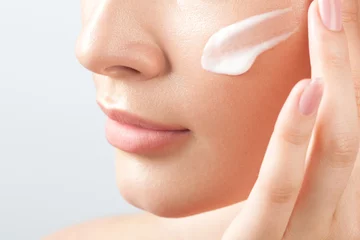
Comprehensive Article: Best Face Creams for Dry Skin

Explore more articles like this @ Where And How Resources


